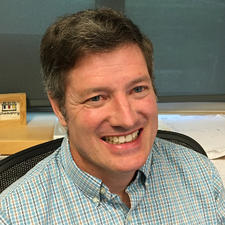Boerge Hemmerling and Christopher Bardeen have received an equipment grant of about $214,000 from the Air Force Office of Scientific Research, or AFOSR, for a project titled “High-Flux Source for Aluminum Monochloride with Applications in Material Science.”

“We will be creating and studying a new material, made of aluminum monochloride,” said Hemmerling, an assistant professor of physics and astronomy and the one-year grant’s principal investigator.
Hemmerling explained that the molecule aluminum monochloride, or AlCl, is a radical — an extremely reactive chemical compound — and does not exist in this form at room temperature. Instead, AlCl reacts with other compounds to form aluminum chloride, hydrochloric acid, and other compounds. Below 180 kelvins, however, AlCl can freeze out and remain AlCl.
“In chemistry, radicals define intermediate parts of many important reactions, such as combustion, biological cell chemistry, ozone depletion, and polymer formation,” said Bardeen, a professor of chemistry and the grant’s co-principal investigator. “Physicists, on the other hand, use radicals for studies of fundamental nature.”
The new equipment will create a high-flux source of AlCl, which deposits AlCl on a substrate. This could help create many AlCl molecules in the gas phase for further laser cooling; a novel material to produce deep ultraviolet light; a novel way to produce solar-grade silicon; and an ultra-sensitive detector for chlorine.

“We will be exploring the possibility of encapsulating AlCl to make it available at higher temperatures, ideally at room temperature,” Hemmerling said.
The high-flux source of AlCl and related items, such as lasers, will be in Hemmerling’s lab and Bardeen’s lab; the two scientists plan to make the equipment mobile. Besides Hemmerling and Bardeen, their graduate students will work on this equipment.
This article is based upon work supported by AFOSR under award number FA9550-21-1-0263. Opinions, findings, conclusions, or recommendations expressed here are those of the researchers and do not necessarily reflect the views of the United States Air Force.